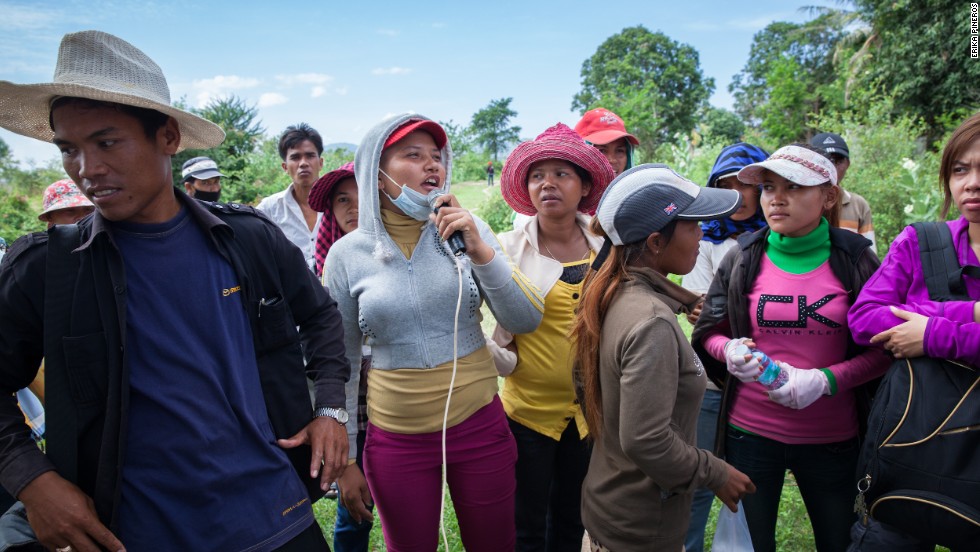
A week ago, thousands of mostly women garment workers in Cambodia blocked a national highway for a half hour. This week, about 3000 mostly women garment workers at the same factory, a factory that produces clothes for Nike, again sat down in protest. This time they were met with stun batons. Over 20 women were hurt, and so the international press showed up.
To their credit, the international press did note that the workers were “mostly female”. But then, the articles would veer into a curious geography: “A series of deadly incidents at factories in Bangladesh, including the collapse of a building last month that killed more than 1,000 people, has focused global attention on safety in factories in Asia makes goods for Western companies.”
Cambodia is not Bangladesh, and Asia is not a country.
From 1974 to the end of 2004, the global garment industry was ruled by the Multi Fibre Arrangement, or MFA, which was designed “to protect” so-called developed countries from the over-productive barbarous hordes of the emerging so-called developing countries. The MFA was basically a global quota system. In January 2005, all that came to an end, and the global garment industry was relocated under the rules of the WTO and the General Agreement on Tariffs and Trade, or GATT. What happened next? Just what you expected: “The result of the end of the Multi-fibre Arrangement was a dramatic redistribution of the allocation of global apparel production. For example, in 2000 China contributed to 24.8 percent of world apparel exports, Cambodia’s share was 0.6 percent, and Mexico’s was 4.6 percent. In 2008, the Chinese market share of world apparel exports increased by 50 percent, as compared to 2004, and it constituted 38.8 percent of the global apparel trade. The Cambodian market share doubled over the same time period and accounted for 1.2 percent of world apparel exports. However, the Mexican share declined threefold in that period, and in 2008 it constituted only 1.4 percent of world apparel exports.”
There were no real surprises in the new world order. Competition among exporting countries drove prices down. Those who were prepared for the change, such as China and Cambodia, saw their national fortunes improve. That doesn’t mean the lot or lives of workers improved, but the national economies grew.
Everyone involved knew that the super majority of garment workers are women. Every study and every theoretical model stated that both in the short term and in the long term putting garment production under the WTO and GATT would be bad for women workers. But the national economies, and the free market, had to grow. The women workers would just have to deal with the price they must pay for everyone else’s success and justice.
In Cambodia, apparel exports account for more than two-thirds of total manufacturing exports, and garment workers make up about a third of the industrial work force. More than 80% of garment workers in Cambodia are women. Post-MFA changes meant that women’s salaries, short term, would decline, and, long term, that the wage gap between women and men would increase. The growing wage gap is part of the program for the future, and part and parcel of `development.’
So, this sounds like Bangladesh, but it’s not.
Between 1999 and 2004, the United States and Cambodia had a deal. If Cambodia demonstrated improved factory working conditions, it could send more to the US markets. Cambodia sends almost all of its exports to the US and Europe, and so this was a big deal. The ILO monitored the conditions through something called Better Factories Cambodia, or BFC. BFC increased individual factories’ US export quotas. It also engaged in capacity building with State, labor and management stakeholders. Cambodia established an Arbitration Council to deal with labor disputes. Many workers’ health and safety conditions improved. Of course problems remained, such as involuntary overtime and lack of childcare facilities, but a growing labor movement addressed them. Along with two decades of industrial garment industry hyper-expansion, Cambodia witnessed the emergence of hundreds of unions, of thousands of organized and wildcat actions, of an increasingly entitled and powerful women workers’ movement.
Women garment workers in Cambodia and in Bangladesh pay a heavy price for the global garment industry. But then … women workers everywhere pay a heavy price for economic growth as for economic decline. For that reason, it’s important to locate the story of the Cambodian women workers more accurately. They are industrial women workers, and they are struggling for exactly the same things that industrial women workers in the Europe and in the United States are struggling for: better pay, better working conditions, dignity, respect, autonomy, power.
A month ago, Better Factories Cambodia released its annual report. The number one issue is fire safety. In the past year there has been “a large drop in compliance.” On the factory floor, the owners are cutting corners and endangering women workers’ health, well-being, and lives. In the national context, the owners are cutting women’s salaries, “because of the economic downturn”, and are widening the wage gap between women and men. Just like in the United States.
(Photo Credit: CNN)